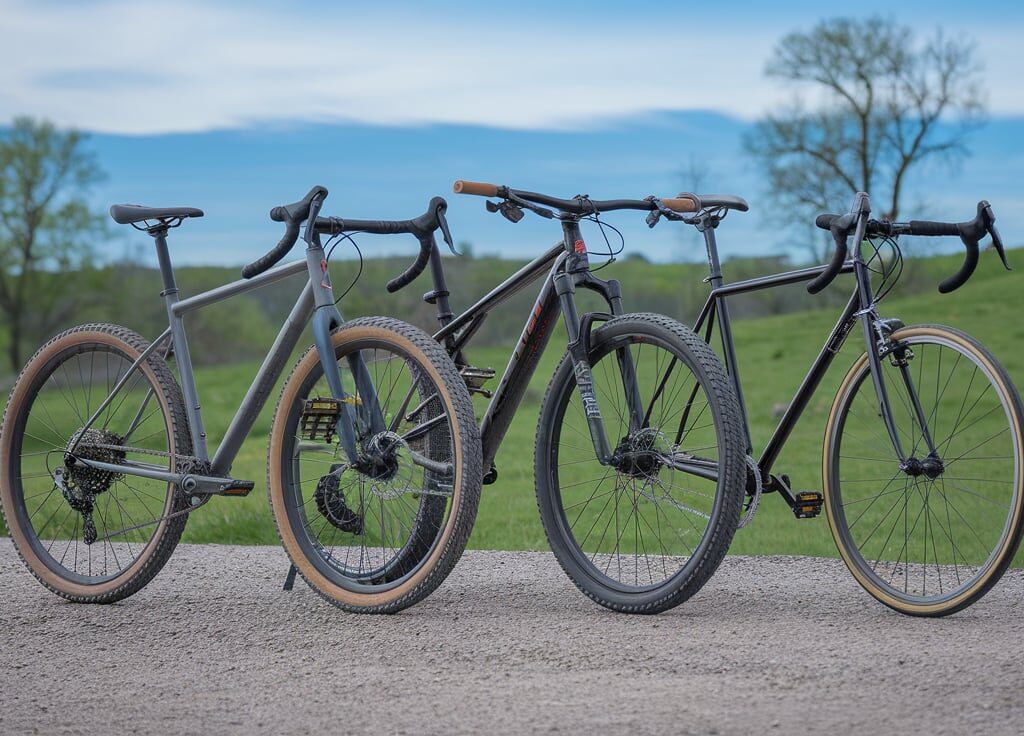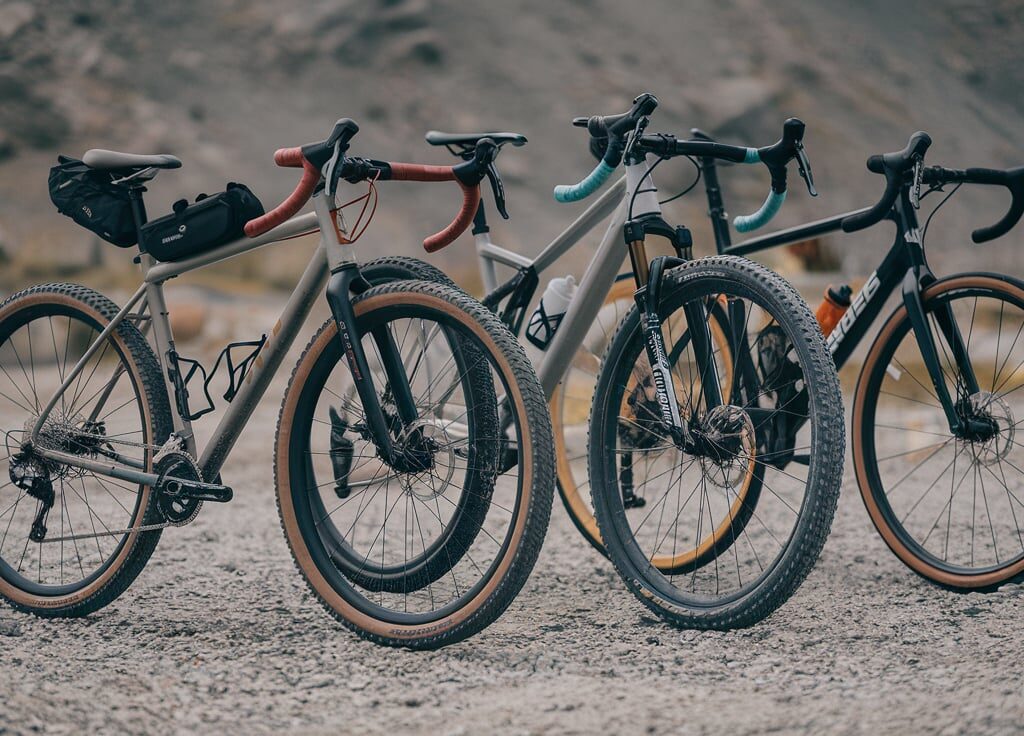Choosing the right bike can feel like standing at a crossroads, with each path offering a unique adventure. Are you drawn to the rugged thrill of mountain trails, the smooth speed of paved roads, or the versatile charm of gravel paths?
In the world of cycling, the debate between gravel bikes, mountain bikes, and road bikes is as exciting as the ride itself. Understanding the differences can transform your cycling experience, making every pedal stroke more enjoyable and perfectly suited to your style.
By the end of this article, you’ll not only know which bike is your ideal match, but you’ll also be ready to hit your chosen path with confidence and excitement. Dive in to discover how to make your cycling dreams a reality.
Bike Types Overview
Choosing the right bike can dramatically change your cycling experience. Whether you’re cruising through city streets, tackling rugged trails, or exploring mixed terrains, understanding the differences between gravel bikes, mountain bikes, and road bikes is crucial. Each type of bike serves a unique purpose and offers distinct features that cater to specific riding styles and environments.
Gravel Bikes
Gravel bikes are the Swiss Army knives of the cycling world. They are built to handle both paved roads and rough terrains, making them perfect for adventurous riders who love variety. With wider tires and a more relaxed frame geometry, gravel bikes offer comfort and stability on long rides.
Imagine heading out for a weekend ride without knowing where you’ll end up. A gravel bike can take you from city streets to country lanes and even onto light trails without missing a beat. Their versatility makes them an exciting choice for those who don’t want to be limited by terrain.
Mountain Bikes
Mountain bikes are designed for off-road adventures. With sturdy frames, shock-absorbing suspension, and knobby tires, they’re built to conquer steep trails and rocky paths. If you love the adrenaline rush of downhill racing or challenging trails, a mountain bike is your best ally.
Think back to the last time you faced a steep hill. The feeling of your mountain bike gripping the terrain as you ascend gives you a sense of empowerment and thrill. Mountain bikes are all about embracing the wild and testing your limits.
Road Bikes
Road bikes are the speedsters of the cycling world. They are lightweight with thin tires and designed for efficiency on paved surfaces. Ideal for long distances and fast rides, road bikes are a favorite among commuters and racers alike.
Picture yourself gliding down a smooth road, the wind rushing past as you effortlessly maintain speed. Road bikes offer a sense of freedom and speed that’s hard to match. If you enjoy the rhythm of a long, uninterrupted ride, a road bike could be your perfect companion.
Have you ever wondered which bike type aligns with your cycling goals? Understanding these differences will help you make an informed decision, ensuring every ride is as enjoyable as possible.

Design And Structure
Understanding the design and structure of bicycles helps in choosing the right one. Gravel, mountain, and road bikes have unique features. Each design suits specific terrains and riding styles.
Frame Geometry
Gravel bikes offer a relaxed geometry. Their frames allow for comfort on long rides. Mountain bikes have sturdy frames. Their design handles rough trails and jumps. Road bikes feature lightweight frames. They are built for speed and smooth surfaces.
Tire Specifications
Gravel bikes come with wider tires. These tires provide grip on mixed terrains. Mountain bikes have even wider tires. They tackle dirt, rocks, and uneven paths. Road bikes feature narrow tires. Their design reduces friction on paved roads.
Suspension Systems
Gravel bikes usually lack suspension. They rely on tire flexibility for shock absorption. Mountain bikes often have front or full suspension. This aids in managing rough trails. Road bikes typically have no suspension. Their focus is on speed and efficiency.
Performance On Different Terrains
Gravel bikes excel on mixed surfaces, providing smooth rides on dirt and paved roads. Mountain bikes dominate rugged trails with superb suspension and grip. Road bikes shine on paved paths, delivering speed and efficiency. Each bike offers unique strengths tailored to specific terrains.
When it comes to cycling, choosing the right bike can significantly impact your performance on different terrains. Gravel bikes, mountain bikes, and road bikes each have unique features designed to excel in specific environments. But how do they truly perform when faced with the challenges of diverse terrains? Let’s explore the distinct capabilities of each type of bike to help you make an informed decision.
Off-road Capabilities
Mountain bikes are the clear winners when it comes to tackling rugged trails and unpredictable paths. Their sturdy frames and wide tires provide excellent grip on loose surfaces. If you’ve ever navigated a rocky trail, you know how crucial suspension systems are. Gravel bikes also perform well off-road, but they are more suited for smoother dirt paths and gravel roads. Their versatility allows you to handle some rough terrain, but don’t expect them to conquer steep, rocky climbs as effortlessly as mountain bikes. Road bikes, with their thin tires and lightweight frames, are not designed for off-road challenges. Attempting to ride a road bike on uneven terrain can lead to punctures and a bumpy, uncomfortable ride.
Paved Road Efficiency
Road bikes shine on paved surfaces. Their aerodynamic design and narrow tires allow you to reach high speeds with minimal effort. If you’ve ever felt the thrill of a smooth, fast ride on asphalt, you know why road cyclists love their bikes. Gravel bikes are surprisingly efficient on paved roads as well. While not as swift as road bikes, they offer a comfortable ride, allowing you to switch from asphalt to gravel without missing a beat. Mountain bikes lag in this category. Their design focuses on durability over speed, and their wider tires create more rolling resistance, making them less efficient on smooth, paved roads.
Mixed Terrain Flexibility
Gravel bikes are the champions of mixed terrain. They provide a seamless transition from road to trail, offering you the freedom to explore diverse landscapes in a single ride. If you enjoy variety and spontaneity in your cycling adventures, a gravel bike might be your perfect match. Mountain bikes can handle mixed terrains, but they are best suited for trails and rougher paths. If your ride involves frequent transitions from smooth roads to challenging trails, you might find the ride less efficient compared to a gravel bike. Road bikes, while speedy on asphalt, are limited in their ability to handle unexpected terrain changes. If you stick to well-maintained roads, a road bike is ideal, but it’s not the best choice for exploring unpredictable routes. So, what’s your cycling style? Does the thrill of speed on paved roads excite you, or do you crave the challenge of off-road trails? Perhaps you prefer the flexibility of mixed terrains. Understanding how these bikes perform on different terrains can help you make the best choice for your cycling adventures.
Comfort And Ergonomics
Comfort and ergonomics are crucial in bike selection. Different bikes cater to different needs. Understanding these can enhance your biking experience.
Riding Position
Gravel bikes offer a relaxed riding position. This reduces strain on your back. Mountain bikes have an upright position. It provides better control on rough terrains. Road bikes feature a more aerodynamic position. This helps increase speed but may strain your neck.
Handlebar Styles
Gravel bikes use drop handlebars. They offer multiple hand positions. Mountain bikes come with flat handlebars. They provide stability and control. Road bikes also use drop handlebars. This design is efficient for long rides.
Seat Comfort
Gravel bike seats are padded for comfort. They suit long-distance rides. Mountain bike seats are narrow. This design helps with maneuverability. Road bike seats are lightweight and firm. They focus on performance and speed.
Speed And Efficiency
Choosing between gravel, mountain, and road bikes depends on terrain and riding style. Gravel bikes excel on mixed surfaces, offering speed and versatility. Mountain bikes prioritize efficiency on rough trails, while road bikes focus on speed on smooth pavement. Each bike type serves distinct needs.
When choosing between a gravel bike, mountain bike, or road bike, speed and efficiency often play a crucial role in your decision. Each bike type offers distinct advantages tailored to different terrains and riding styles. Understanding these differences can help you select the right bike for your adventures.
Average Speed
Gravel bikes offer moderate speed, suitable for mixed terrains. They often achieve speeds between 15-18 mph on flat surfaces. Road bikes, with their sleek design, can reach 20-25 mph easily, making them ideal for speed enthusiasts. Mountain bikes, however, are slower, typically around 10-12 mph due to their rugged build and terrain focus.
Aerodynamics
Road bikes excel in aerodynamics with their drop handlebars and thin tires, slicing through the air efficiently. Gravel bikes come with a more relaxed geometry but still maintain decent aerodynamics for mixed terrains. Mountain bikes sacrifice aerodynamics for stability, with wider handlebars and chunkier tires, prioritizing control over speed.
Gear Ratios
The gear ratios on a gravel bike are versatile, allowing you to tackle both steep climbs and flat roads with ease. Road bikes usually feature higher gear ratios, built for speed on even surfaces. Mountain bikes boast lower gear ratios, essential for climbing steep, uneven trails without losing momentum. Choosing the right bike involves more than just speed. Consider where you’ll be riding most often. Do you value the thrill of speed on paved roads, or do you find joy in conquering rugged trails? Your personal biking experience can guide you in making the best choice.
Durability And Maintenance
When choosing between a gravel bike, mountain bike, or road bike, durability and maintenance are critical aspects to consider. Each bike type has its strengths and weaknesses in terms of the materials used, maintenance costs, and ease of repair. Let’s explore how these factors impact your biking experience and investment.
Material Longevity
The lifespan of your bike largely depends on the materials used in its construction. Gravel bikes often feature versatile frames made from steel or aluminum. These materials offer a balance between durability and weight.
Mountain bikes, designed to withstand rough terrains, usually boast robust aluminum or carbon fiber frames. They are built to endure shocks and impacts, making them highly durable.
Road bikes prioritize lightweight performance, often crafted from carbon fiber. While carbon fiber is strong, it can be more susceptible to damage from crashes or rough handling.
Think about where you ride most often. Are you more likely to tackle rocky trails or smooth city roads?
Maintenance Costs
Maintenance costs can vary significantly between these bike types. Gravel bikes tend to have moderate maintenance expenses due to their straightforward design and durable materials.
Mountain bikes, with their complex suspension systems, might require more frequent tune-ups, especially after intense off-road adventures.
Road bikes, with their precision components, often demand regular upkeep to maintain peak performance. This can lead to higher maintenance costs over time.
Consider your budget. How much are you willing to spend on keeping your bike in top shape?
Repair Accessibility
The ease of repairing your bike is another essential factor. Gravel bikes, with their simple and adaptable design, are generally easier to fix using basic tools. This makes DIY repairs more feasible.
Mountain bikes might require specialized knowledge for suspension or brake repairs, leading you to seek professional help more often.
Road bikes, while less likely to suffer mechanical damage, can require specific tools and expertise for repairs. This can limit your ability to fix issues on your own.
Do you enjoy tinkering with your bike, or do you prefer leaving repairs to the professionals?
Ultimately, the choice between a gravel bike, mountain bike, and road bike depends on your priorities regarding durability, maintenance, and repair accessibility. What matters most to you in your biking journey?
Cost Comparison
When comparing gravel bikes, mountain bikes, and road bikes, one critical aspect is the cost. Understanding the financial commitment associated with each type of bike can guide you toward the best option for your cycling aspirations. Let’s delve into how the costs stack up, from the initial investment to long-term value.
Initial Investment
The upfront cost is often a deciding factor for many cyclists. Gravel bikes typically sit in a unique position here, often combining features from mountain and road bikes. This can lead to a moderate initial price.
Mountain bikes, with their robust frames and suspension systems, can be pricier due to the specialized components. Road bikes can vary widely, with some models being quite affordable, while others designed for high-speed performance can stretch your budget.
Consider what you need. If you’re planning on tackling varied terrain, a gravel bike might offer the best blend of features for your initial spend.
Long-term Value
Think beyond the price tag. Gravel bikes often offer versatility, allowing you to switch between road and trail riding without extra cost. This can save you money in the long run.
Mountain bikes are durable, designed to withstand tough conditions. This durability can mean fewer repairs and replacements over time, offering solid value.
Road bikes excel in efficiency and speed. If your focus is on competitive cycling, investing in a high-quality road bike can pay off in performance gains.
What kind of riding do you expect to do most? Your answer might help you determine which bike gives you the best return on investment over the years.
Price Range
Price points for these bikes can range significantly. Gravel bikes can start around $800 and go up to $3000 or more. Mountain bikes can begin at $500 but reach $4000 for high-end models.
Road bikes offer the widest range, from entry-level models at $300 to professional-grade bikes exceeding $10,000. This diversity means there’s likely something within your budget, regardless of your cycling goals.
Reflect on your budget and priorities. Are you looking for a bike that can handle various terrains, or is speed your top priority? This can help narrow down your options within these price ranges.
Ultimately, the choice between a gravel bike, mountain bike, and road bike isn’t just about cost. It’s about what you value in your ride and how each bike fits your lifestyle and goals. So, which bike aligns best with your cycling dreams?
Ideal Use Cases
Choosing the right bike depends on your intended use. Gravel bikes, mountain bikes, and road bikes all have unique strengths. Each excels in different environments and activities. Understanding their ideal use cases helps you make an informed decision.
Commuting
Gravel bikes offer versatility for daily commutes. They handle both paved roads and light trails. This makes them perfect for mixed-terrain routes. Mountain bikes are less efficient on roads. Their heavy frames and thick tires can slow you down. Road bikes shine on smooth pavements. Their lightweight design allows fast, effortless travel in urban settings.
Competitive Racing
Road bikes dominate in competitive racing. Their aerodynamic build and speed are unmatched. Gravel bikes are suitable for gravel races. They offer stability and comfort on uneven surfaces. Mountain bikes are ideal for off-road racing. Their robust frames and suspension systems handle rugged terrains well.
Adventure Riding
Gravel bikes are top choices for adventure riding. They adapt well to various terrains, from gravel paths to forest trails. Mountain bikes offer more rugged capabilities. They tackle challenging trails with ease. Road bikes are not suitable for adventure riding. They lack the durability needed for rough terrains.
Personal Preferences
Choosing between gravel, mountain, and road bikes depends on personal riding style and terrain preference. Gravel bikes offer versatility for mixed surfaces, mountain bikes excel on rough trails, and road bikes shine on smooth pavements. Each bike type caters to different adventures and experiences.
When choosing between a gravel bike, mountain bike, or road bike, understanding personal preferences is crucial. Each bike type caters to different tastes, needs, and lifestyles. Your choice reflects your personality and how you want to experience cycling.
Lifestyle Considerations
Your daily routine and where you live can heavily influence your decision. If you’re surrounded by mountainous trails and love nature, a mountain bike might be your best friend. City dwellers who commute might prefer the sleek speed of a road bike. Think about your social life too. Do your friends prefer leisurely rides on paved paths, or are they adventure seekers? Your bike choice can affect your social interactions and shared experiences.
Experience Level
Your cycling experience can guide you toward the right bike. Beginners might appreciate the versatility of a gravel bike, which offers a forgiving ride on various terrains. If you’re an experienced cyclist, you might relish the precision and speed of a road bike. Or, if you’re a seasoned adventurer, a mountain bike might be the challenge you crave. Reflect on your comfort level and the skills you want to develop. Are you ready to dive into technical trails, or do you prefer the open road?
Purpose Of Use
Why are you biking? Your purpose can shape your choice. If fitness is your goal, road bikes offer an efficient cardio workout. For leisure and exploration, gravel bikes provide the freedom to ride anywhere. Mountain bikes are perfect if you seek thrill and adrenaline in rugged terrains. Consider long-term goals too. Do you plan to participate in races, or are you just looking for a fun way to explore your surroundings? Your answers will guide your decision. Choosing the right bike is a personal journey. Reflect on your lifestyle, experience, and goals. What does your ideal cycling adventure look like?
Frequently Asked Questions
Which Is Better, A Mountain Bike Or A Gravel Bike?
Choosing between a mountain bike and a gravel bike depends on terrain and purpose. Mountain bikes excel on rough trails, offering durability and suspension. Gravel bikes are versatile, suitable for mixed surfaces and longer rides. Consider your preferred riding environment to make the best choice.
Which Is Better, A Road Bike Or A Gravel Bike?
Choose a road bike for speed and efficiency on paved surfaces. Opt for a gravel bike for versatility on mixed terrains. Assess your riding goals and terrain preferences to decide which suits you best. Both offer unique benefits for different cycling experiences.
What Are The Downsides Of A Gravel Bike?
Gravel bikes can be heavier than road bikes. They may lack speed on smooth surfaces. Wider tires can reduce efficiency. The geometry might be less aerodynamic. Limited suspension makes rough trails challenging.
Should I Get A Road Bike If I Have A Gravel Bike?
Consider your riding goals and terrain preferences. Road bikes offer speed on paved surfaces. A gravel bike provides versatility on mixed terrain. If you primarily ride on smooth roads and seek faster speeds, a road bike could be a beneficial addition.
Assess your needs before deciding.
Conclusion
Choosing between gravel, mountain, and road bikes depends on your needs. Consider where you ride most. Gravel bikes offer versatility. They handle both paved and rough paths. Mountain bikes excel on rugged trails. Perfect for adventurous off-road rides. Road bikes are best for speed on smooth surfaces.
Ideal for racing and long-distance travel. Think about comfort, terrain, and purpose. Each bike has its benefits. Evaluate your priorities. This helps in making the right choice. Enjoy your cycling adventures with the perfect bike for you. Remember, the right bike enhances your riding experience.



